
| Publisher: | Amistad | |
| Genre: | Romance, General, Coming of Age, Fiction, Historical, African American | |
| ISBN: | 9780062329899 | |
| Pub Date: | June 2019 | |
| Price: | $16.99 |
| Fiction |
by Celeste O. Norfleet
In August of 1968, after the assassination of Martin Luther King Jr., hope for racial equality in the United States seems naïve. One Night in Georgia by Celeste O. Norfleet demonstrates the humiliating effects of racism with the story of a drive through the South, where "the bones of men, women, and children long forgotten had been crushed and buried."
Three friends drive from Harlem to Spelman College in Atlanta for their senior year. Zelda is the daughter of an African American activist who was brutally murdered. She inherited his desire for revolution, saying, "Change only comes when we make it." Daphne, biracial, is deeply devout and conflicted about her place in the black community. Veronica's wealth buffers her from the overt discrimination experienced by others as dark as she. "Why do you always want to make it a war?" she asks Zelda. Escorting them is Daniel, a Vietnam veteran whose confidence makes him frightening to many white people he meets. Carrying the Negro Motorist Green Book, a travel guide to safe restaurants, gas stations and motels, they set out on what is meant to be a carefree adventure before they graduate. Ultimately, the trouble they try to avoid fractures their trip and changes their lives forever. The strength of this novel is the multi-faceted debate on how best to confront racism. Readers will enjoy a straightforward plot that moves quickly, with characters that understand "if we don't face our past, then we as a nation will surely repeat it." --Cindy Pauldine, bookseller, the river's end bookstore, Oswego, N.Y.
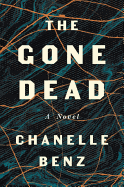
| Publisher: | Ecco | |
| Genre: | Sagas, General, Literary, Fiction, African American | |
| ISBN: | 9780062490698 | |
| Pub Date: | June 2019 | |
| Price: | $26.99 |
| Fiction |
by Chanelle Benz
Billie James was just a toddler when her father died. Cliff James, a black poet who made a name for himself in Harlem during the civil rights era, had returned to his family home in Mississippi, where he died of an apparent accident. Billie was visiting him the night he died, but has no recollection of the events. Her mother, divorced from Cliff, flew to Mississippi and took Billie away before Cliff's family could arrange a funeral for him. Now, 30 years later, her mother has died, and Billie is returning to Mississippi, where she's inherited her father's house, and all the ghosts that come with it.
In her debut novel, The Gone Dead, Chanelle Benz constructs a rich sense of place that contributes to the sinister atmosphere. The history of Mississippi and the South provide ample context, and Benz takes her readers on an emotional exploration of the darkness that continues to haunt the nation as her protagonist tries to reconstruct the missing memories from her childhood.
While Billie searches for a connection to her father, she starts asking questions and poking around in things the locals would prefer to keep firmly in the past. She engages the help of a scholar working on a biography of her father, and together they go in search of the facts surrounding the end of Cliff James's life, which could very well result in the end of theirs. Haunting and atmospheric, The Gone Dead is a gripping mystery and a rich family drama--irresistible Southern fiction. --Jen Forbus
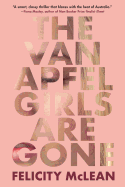
| Publisher: | Algonquin | |
| Genre: | Psychological, Mystery & Detective, International Crime & Mystery, Coming of Age, Thrillers, Fiction | |
| ISBN: | 9781616209643 | |
| Pub Date: | June 2019 | |
| Price: | $15.95 |
| Starred | Mystery & Thriller |
by Felicity McLean
"They're kids, for heaven's sake. What have they got to be fearful of?" Perhaps more than anyone knew. In 1992, sisters Ruth, Hannah and Cordie Van Apfel disappeared during Tikka Malloy's skit in their school's Showstopper production. Twenty years later, Tikka returns to Australia to face her sister Laura's lymphoma diagnosis and her own decades-long haunting.
Tikka and Laura knew things they didn't tell in 1992. What Tikka knew, or thought she knew, has gnawed at and unsettled her ever since, with false Cordie sightings continuous as a tic. The detective told them to "sit tight"--he would find their friends. But Tikka can no longer sit tight, compelled to address the past and whether her family did enough to help their neighbors.
Australian journalist Felicity McLean's The Van Apfel Girls Are Gone is a well-layered puzzle with unexplained pieces to spare. At the core of this gripping debut novel are the uncertain perceptions of young Tikka and 2012 Tikka, still partially trapped in her 11-year-old self.
McLean's often striking prose swirls deftly between the two Tikkas as suspicions begin to emerge--about the Van Apfels and their violently pious patriarch, Cordie's broken arm, and the school's first male teacher. A slow burn that maintains an electric current of dread, the narrative is also cleverly colored by the underpinning of the infamous Chamberlain case. Although more than 30 years later it was confirmed that Lindy Chamberlain's baby was indeed snatched by a dingo, the Van Apfel girls may get no such closure. --Lauren O'Brien of Malcolm Avenue Review
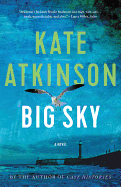
| Publisher: | Little, Brown | |
| Genre: | Private Investigators, Mystery & Detective, Crime, Literary, Suspense, Thrillers, Fiction | |
| ISBN: | 9780316523097 | |
| Pub Date: | June 2019 | |
| Price: | $28 |
| Mystery & Thriller |
by Kate Atkinson
Less than a year after Transcription, Kate Atkinson (A God in Ruins, Life After Life) is back with a new Jackson Brodie novel, fifth in the series after a nine-year hiatus. Fans are happy, and Big Sky can be read out of sequence, so new fans will be made. Brodie is a private detective (although he doesn't like the term: "Too Chandleresque. It raised people's expectations") now living in a seaside village on the east Yorkshire coast. His occasional roommate is his son, Nathan, with the typical adolescent ego "big enough to swallow planets whole," while his ex-partner, Julia, films a TV series nearby. Dido, Julia's aging yellow Lab, slow but game, also shares the cottage.
Brodie is doing the dull task of tracking an unfaithful husband, but from the first chapter--in which two sisters are flown from Eastern Europe to England for jobs in the hotel industry--it's obvious something worse than infidelity looms. It takes a while to get to the dark crux of the story, but the leisurely pace, as the characters are fully developed, is a pleasure. In particular, Julia is often inside Brodie's head; (" 'Have you even tried being an optimist?' Julia said. 'Once,' Jackson said. 'It didn't suit me.' ") She is neurotic about Nathan's diet, but Brodie thinks, "Another year or two and Julia would be worrying about cigarettes and alcohol and drugs. She should enjoy the sugar years."
Big Sky hosts a slew of nefarious people, like the quartet of golfing buddies with a brutal side gig, and the pedophile prisoner. There are good guys, too: a trophy wife, her stepson, a drag queen, a former colleague of Brodie and her partner. With both dread and humor, Atkinson pulls many disparate threads together in a satisfying weave. Brodie is back, with panache. --Marilyn Dahl, Shelf Awareness

| Publisher: | Houghton Mifflin | |
| Genre: | Occult & Supernatural, Family Life, Mystery & Detective, General, Cozy - General, Literary, Fiction | |
| ISBN: | 9780544987296 | |
| Pub Date: | July 2019 | |
| Price: | $27 |
| Mystery & Thriller |
by Howard Norman
Muriel and Zachary are newlyweds living in their newly purchased old farmhouse in small-town Vermont. She has just defended her dissertation on translations of Mukei Korin's erotic Japanese poems; that she brings this work home is a boon for their marriage. He is a private detective investigating the disappearance of a local girl who's been missing for months. They bought the farmhouse from semi-famous painter Lorca, a recent widow whose husband, Simon, had a heart attack and tipped overboard on a ferry en route to Nova Scotia.
The first surprise of Howard Norman's (The Northern Lights, What Is Left the Daughter) riveting novel The Ghost Clause is that their stories are told in the voice of Simon's ghost. He still occupies the farmhouse, and feels very involved in the lives taking place there now.
Supremely enjoyable, this novel is about the intersections of lives. Finely detailed in its particulars and simultaneously revealing of grand-scale humanity, the story is both poignant and frequently gut-laugh-funny. Norman's prose is inspired; Simon's narration is adorned with lyric moments: "A hammock of moon was traveling pale in hazy light," Simon observes of an evening at home with Lorca when they were still alive together; there is more poetry here than Korin's.
The Ghost Clause is one of the best kind of novels, excelling in every way: it's delightful at line level, humorous, absorbing in individual stories and wise on a higher plane. A book for any reader who cares about people. --Julia Kastner, librarian and blogger at pagesofjulia
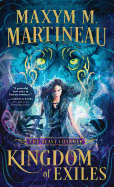
| Publisher: | Sourcebooks Casablanca | |
| Genre: | Sagas, Epic, Paranormal - General, Fantasy, Romance, Fiction, Romantic | |
| ISBN: | 9781492689386 | |
| Pub Date: | June 2019 | |
| Price: | $7.99 |
| Science Fiction & Fantasy |
by Maxym M. Martineau
Leena Edenfrell is a Charmer, a human with magical powers who collects and wields the power of magical beasts. Normally, she would spend her life in idyllic Hireath, but she fell in love with the wrong man, who got her cast out for a crime he committed. Leena is forced to sell some of her beloved beasts to stay alive--an act absolutely forbidden among her kind--and she is on the hunt for the Myad--the one beast she knows can make the Charmers Council listen to her side of the story and maybe allow her back home.
Noc is the master of the guild at Cruor, feared assassins whose ranks are made up of people brought back from the dead, and he is struggling with a secret curse: anyone he loves will sicken and die from an incurable disease. While he doesn't have much hope of breaking the curse, a Gyss, one of the Charmers' beasts that grants wishes for a price, just might work.
Lena and Noc strike a bargain: he won't fulfill his contract to kill her if she provides person-specific beasts for himself and his three top assassins. But secrets from both their pasts catch up with them, threatening their newfound love and their very lives. The first book in the Beast Charmer trilogy by Maxym M. Martineau, co-founder of AllTheKissing.com, is witty and sexy, featuring a diverse range of people and beasts living in a fully imagined world. --BrocheAroe Fabian, owner, River Dog Book Co., Beaver Dam, Wis.
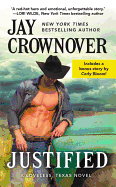
| Publisher: | Forever | |
| Genre: | Western, Women, Sagas, Small Town & Rural, Police & Law Enforcement, Romance, Contemporary, Suspense, Southern, Fiction | |
| ISBN: | 9781538746332 | |
| Pub Date: | June 2019 | |
| Price: | $7.99 |
| Romance |
by Jay Crownover
Jay Crownover (the Marked Men series) starts her first Western series with Justified, which takes place in the imaginary town of Loveless, Tex. New sheriff Case Lawton and attorney Aspen Barlow--childhood friends and now adult enemies--must put aside their animosity when someone breaks in and vandalizes Aspen's office.
Aspen was assigned to represent Case's ex-wife in a divorce that cost him several years of custody of his only son and destroyed the friendship between Case and Aspen. Representing victims of domestic violence and the wealthy alike, Aspen has earned herself a long list of enemies, which makes it all the more complicated for Case to sort out the threat to her life.
When someone sets fire to her home and she's attacked her while leaving the hospital, Aspen moves in with Case so that he can protect her. This proximity forces the two to sort through their baggage and address the sexual tension between them. Crownover excels at balancing the romantic part of the story with the suspense elements. The result is a heart-pounding narrative that readers will be compelled to finish quickly.
The romance unfolds as a slow burn ("I was kissing her the way you kissed someone you loved and hated at the same time. A little sweet, a little mean."), which fits with the enemies-to-lovers premise and the impressive number of times Aspen is nearly killed. Twists and turns abound as this whodunit builds up to revelations that will surprise even longtime suspense readers. --Suzanne Krohn, editor, Love in Panels
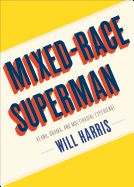
| Publisher: | Melville House | |
| Genre: | African American Studies, Asian American Studies, Anthropology, Cultural & Social, Social Science, Ethnic Studies | |
| ISBN: | 9781612197890 | |
| Pub Date: | July 2019 | |
| Price: | $15.99 |
| Social Science |
by Will Harris
In Mixed-Race Superman, London essayist and poet Will Harris explores what it means to be mixed-race and to see oneself as mixed-race by examining the public personas of President Barack Obama and actor Keanu Reeves. Harris uses this chapbook-length essay to understand how they figure into the cultural consciousness of what such a racial background entails. Drawing on his own life, Harris considers his own perceptions of what it means to be Anglo-Indonesian, of not feeling seen and lacking the language to describe his mixed heritage.
The essay sometimes feels fragmented chapter to chapter. Often, in the final paragraphs of a section, Harris begins teasing out an idea or thought that seems to want more examination. This kernel of an idea is sometimes revisited several chapters on. While critical readers might want these reflections to be pushed further, the fragmented nature stylistically reflects the author's own precarious considerations of who he is, and who he is in relation to other people. Perhaps most importantly, Harris explores different moments in his life where he did or didn't feel connected to wider discussions concerning race in both the U.K. and U.S. public consciousness. He provides a roadmap through which readers might learn to think deeply about these topics. --Michelle Anya Anjirbag, freelance reviewer
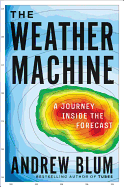
| Publisher: | Ecco | |
| Genre: | Technology & Engineering, Nature, Weather, Meteorology & Climatology, Earth Sciences, Science, Global Warming & Climate Change, History | |
| ISBN: | 9780062368614 | |
| Pub Date: | June 2019 | |
| Price: | $25.99 |
| Starred | Nature & Environment |
by Andrew Blum
In 2012, Hurricane Sandy wreaked havoc on the Eastern seaboard, claiming hundreds of lives and causing tens of billions of dollars in damage. While the destruction was severe, it could have been much worse--the storm was predicted more than a week before landfall. This early warning was the result of weather forecasting, a relatively young science that is becoming increasingly accurate.
In The Weather Machine, journalist Andrew Blum (Tubes) uncovers the nuts and bolts that make prediction possible. The invention of the telegraph in the mid-19th century allowed people to describe and share the weather at their locations and to develop networks and establish patterns. Soon after, the Smithsonian displayed weather across the U.S. on a large map, while the British developed the synoptic chart that showed changes in response to a deadly storm, thanks to reports from farmers and sailors, respectively. In the early 20th century, Norwegian scientist Vilhelm Bjerknes used math and physics to hypothesize about weather patterns, laying the foundation for modern-day meteorology. Blum explores additional elements contributing to the weather machine: stations (including Weather Station Kurt on Newfoundland, the only Nazi incursion on North American soil), global satellites that crisscross the earth and apps that make longer-range predictions.
None of this would be possible if it were not for global cooperation among nations. Weather knows no borders. Yet, the technology that supports weather observation also supports military endeavors, revealing a conundrum: "We learned to see the whole earth thanks to the technology built to destroy the whole earth." With infectious curiosity and spirit, The Weather Machine is an engaging foray into the ingenuity that built the modern science of weather prediction. --Frank Brasile, librarian
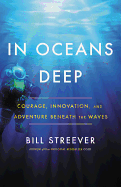
| Publisher: | Little, Brown | |
| Genre: | Earth Sciences, Natural History, Science, General, Sports & Recreation, Scuba & Snorkeling, Oceanography, Physics | |
| ISBN: | 9780316551311 | |
| Pub Date: | July 2019 | |
| Price: | $28 |
| Nature & Environment |
by Bill Streever
Commercial diver-turned-biologist Bill Streever traces the human pursuit of the unexplored depths of our planet in In Oceans Deep: Courage, Innovation, and Adventure Beneath the Waves. Streever started as an oil pipe diver and, later, as a biologist, he retained his fascination with the exploration of the seas and the technology it took to get there--a field little known in comparison to humanity's pursuit of the stars, though it developed simultaneously.
Streever's entertaining book begins with the first successful dive of a manned submersible to the floor of the Mariana Trench in 1960, and then traces the history of human presence in the ocean. Streever considers the biology of free diving and the many, often unconnected, scientific studies that lead to understanding the effects of pressure on both machines and humans. Through this, and including extensive endnotes worth reading, Streever emphasizes that successful exploration is dependent on a partnership between the depths and the surface--key to conserving the ocean itself. He notes, "This story is not one about one person or one group of people or one organization. It is the story of thousands of players often disconnected in time and geography and culture, men and women who not only didn't know one another but who did not even know of one another." Streever tells a story that captures human fascination with the ocean, and encourages readers to become more interested in what lies beneath the waves. --Michelle Anya Anjirbag, freelance reviewer

| Publisher: | Disney-Hyperion | |
| Genre: | Humorous, General, Romance, Contemporary, Coming of Age, Young Adult Fiction | |
| ISBN: | 9781484798355 | |
| Pub Date: | June 2019 | |
| Price: | $17.99 |
| Starred | Children's & Young Adult |
by Preston Norton
Imagine being a high school guy who's a bit uncertain about your gender identity. "Not 'female trapped in a male body,' per se.... Not even gender fluid." More like you've been "packaged improperly." Now imagine that at the precise moment of a total solar eclipse, you swap bodies with a girl. Then you swap back. And again. Not just any girl, though: "Wynonna fu*king Jones," your tormentor since childhood.
With a "FLASH!," Ezra Slevin felt an impact "like my astral form was being knocked out of my human shell." Next thing he knew, he was watching the eclipse with Wynonna's eyes. The enemies are forced by their bizarre situation to bond (exchanging intel on phone passwords, crushes, family dynamics and how to drive a stick shift). Although the menstruation and fussy clothing with straps and thongs and heels are a bit terrifying at first, Ezra, the book's narrator, finds himself strangely comfortable inhabiting Wynonna's body. Meanwhile, as a punishment for a school infraction, Ezra and Wynonna, along with their best friends, have been forced to participate in a performance of Shakespeare's Twelfth Night. The irony of this particular punishment is not lost on either of the swappees, as the play is chock-full of gender-bending, identity-trading switcheroos, which are even more complicated in practice since Ezra and Wynonna are never sure when--or if--they will switch bodies.
In a riotous, stirring and racier variation on Freaky Friday, Preston Norton (Neanderthal Opens the Door to the Universe; Marrow) presents a canny perspective on selfhood and gender. With its hilarious banter and themes of love, friendship and identity, Where I End & You Begin has charm for teens of any gender. --Emilie Coulter, freelance writer and editor

| Publisher: | Neal Porter/Holiday House | |
| Genre: | Pets, Cats, Animals, Ghost Stories, Juvenile Fiction | |
| ISBN: | 9780823442836 | |
| Pub Date: | June 2019 | |
| Price: | $18.99 |
| Children's & Young Adult |
by Kevan Atteberry
In his back-flap bio, Kevan Atteberry (Puddles; Tickle Monster) insists he "doesn't really like them"--cats, he's talking about. And yet, he's written and illustrated a heartfelt homage to enduring feline love. (And I'm not crying, you are!)
"There is a ghost in my house," a little boy explains. "I think it's a cat. I know because I used to have one." Above the piano are framed photos memorializing the cat-and-boy bond, capturing wide grins of mutual cheek-to-cheek delight. As the boy goes about his day, he sees "a dash from the left, or a dart from the right," yet no matter how closely he pays attention, "It's always gone before I can really see it." Even during the night, "I feel its weight, its warmth, its purring. When I look, it's gone." When morning comes, once again he chases the specter throughout the house and "finally, [he] saw it. And followed it." He watches his old friend leap away... then opens the front door to find the perfect surprise.
On every page, Atteberry poignantly recognizes a child's deep sense of loss. The boy has toys, books, music, a comical pet fish, yet Atteberry never shows more than wide-open eyes and a little nubby nose on his face, seemingly suggesting dampened reactions: the child still mourns. The first smile appears only in a photo from the past--and doesn't return until book's end, when the opening "There is a ghost in my house" gets revised to "There is a ghost in our house." A beloved pet never truly disappears, but joy with a new pet is possible, too. --Terry Hong, Smithsonian BookDragon
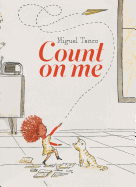
| Publisher: | Tundra Books | |
| Genre: | Art, Mathematics, Social Themes, Self-Esteem & Self-Reliance, Juvenile Fiction | |
| ISBN: | 9780735265752 | |
| Pub Date: | June 2019 | |
| Price: | $17.99 |
| Children's & Young Adult |
by Miguel Tanco
In Count on Me, a young girl shows readers "there are infinite ways to see the world." Her father, her mother and her brother all have various passions (art, entomology and music, respectively). In several spreads, the curly-haired protagonist takes part in various activities: theater, dance, cooking, singing, painting, sports and music. Her true passion, however, is math. This is revealed on a double-page spread in which all of the students, except for her, have painted animals on their canvases--she, shown smiling cheekily at the teacher, has painted numeric equations and formulas.
At the playground, she sees "geometric shapes" and finds "the perfect curve" on the slide; at the lake with her family, she sees concentric circles while skipping stones; and at home, she "solve[s] difficult group problems" by dividing a family meal and flying paper airplanes with her friends. The final pages of the book are part of the protagonist's notebook (aptly titled "My Math") and explain the different types of math in the story, including fractals, basic polygons, concentric circles, curves, solid figures, trajectories and sets. All through her city, the protagonist finds joy in spotting "hidden" math and deciphering how it makes places and things beautiful and unusual.
Count on Me is a sweet, quiet story that can show children there are myriad approaches to view the wide world. Miguel Tanco's watercolor and digital illustrations use a loose black line and a subdued palette with liberal pops of red, creating dynamic illustrations with a Ludwig Bemelmans feel. The depictions of the little girl trying different activities might inspire readers to try new activities for themselves, potentially discovering passions and seeing their world in a new manner. --Clarissa Hadge, bookstore manager, Trident Booksellers & Cafe, Boston, Mass.